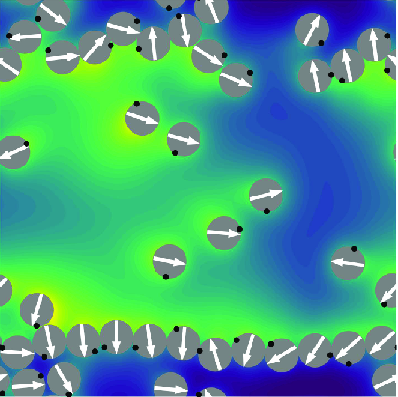No CrossRef data available.
Published online by Cambridge University Press: 30 July 2025

Phoretic particles are often used as a simple model for experimental and theoretical studies of active matter. We develop a computational framework to resolve hydrodynamic and chemical interactions of multiple self-propelling phoretic particles suspended in two-dimensional Stokes flow. The proposed method is precise enough to resolve correctly the subtle transitions between different modes of spontaneous locomotion for a single particle, and fast and versatile enough to study multiparticle dynamics in periodic or confined domains. The particles are modelled as chemically active rigid circles, which can emit or absorb a solute into surrounding fluid. The interaction between particles and solute induces a slip flow on particle surfaces, and the solute is advected by the fluid flow and diffuses with a constant diffusivity. A fast boundary integral method is proposed to solve fluid–structure interaction in Stokes flow. Acceleration of this method is provided by splitting the velocity field due to a set of point forces into a short-range part with singularity and a long-range part which is sufficiently smooth, thanks to an Ewald-like decomposition. An overlapping mesh method is employed for advection–diffusion of the solute with moving boundaries. The idea is to decompose the computational domain into several overlapping subdomains, and body-fitted meshes are used to ensure sharp resolution of boundary conditions. The framework is validated separately for the Stokes problem and the advection–diffusion problem, reaching relatively high order of accuracy. We apply our framework to several practical problems, such as a single particle in a channel and particle suspensions, showing rich sets of behaviours.